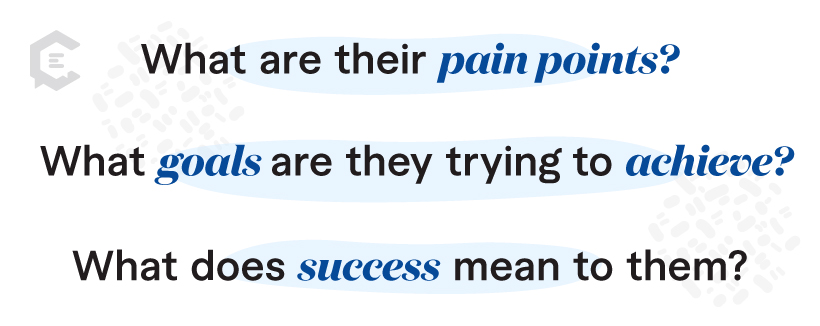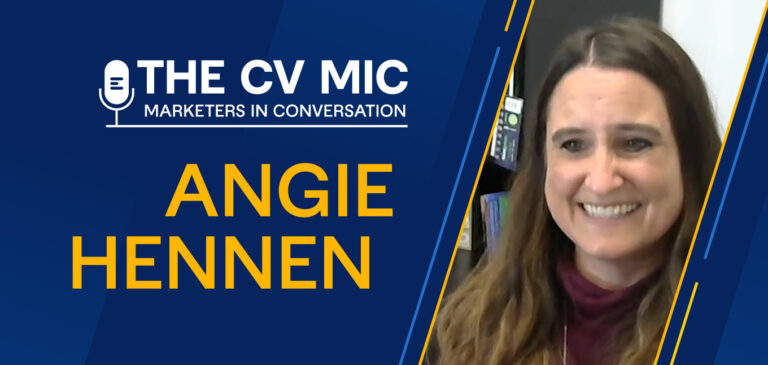Case studies are a vital part of many marketing campaigns. They can substantially impact your success by providing concrete examples of how your business helps users.
When carefully crafted, a case study creates leads, closes deals, and drives conversions. However, many case studies lack structure, data, and clarity — leading to a time-intensive piece of content that ultimately yields little value.
In this guide, we will break down the use of case studies in content marketing and discuss how to craft ones that maximize impact on your company’s goals and objectives.
Understanding Case Studies in Marketing
A case study tells the story of how real customers use your service or product. These customer stories can be delivered as an easily accessible on-page copy (think blogs), downloadable PDFs behind a gate, or single sales sheets distributed by your internal team.
At their core, case studies include:
- A Challenge: the problem your customer had
- A Solution: how your service took that pain point away
- The Results: some measure of success to prove your solution made a difference
This narrative framing can help prospects envision how your service will transform their business. It also provides concrete signs of success — not just cheerleading from your internal marketing department.
Who needs case studies?
The better question may be, who doesn’t need a case study? There are countless situations when a case study comes in handy, like meeting an early-stage prospect or closing a deal.
Traditionally, case studies are used by business-to-business (B2B) companies that need major stakeholder buy-in to close deals. Consumer-focused brands like Walmart and Coca-Cola have used case studies to showcase their success and drive their growth. If you have a compelling narrative of real-world users benefiting from your product or service, crafting a case study story is worth it to increase brand awareness and boost sales efforts.
Business-to-consumer (B2C) brands can also use case studies. However, they’ll typically focus on a brand’s impact on larger consumer groups.
Who reads case studies?
Case studies are at the bottom of the funnel. They’re likely read by a whole host of buyer personas.
A non-decision maker will likely read case studies before sending your outreach email up the ladder. A decision-maker will need that case study before converting. If you must select only one buyer persona to write your case study for, aim for your decision maker. A quality case study could be the only thing between you and executive approval.
Influencing purchasing decisions with social proof
A recent study found that social proof provides a “nudge” in a particular direction when people have no prior preference. Case studies are that nudge.
And you may have to “nudge” multiple times. It generally takes eight touchpoints with a customer to close a sale. That’s especially true in the B2B space, where price tags may be higher, and the product/service can impact hundreds or thousands of people.
The power of storytelling
What makes a case study truly compelling? Relatability.
The human element is at the core of every effective case study. And the natural case study structure of “Challenge, Solution, Results” is a perfect template to craft a story around.
The best case studies take an audience on a journey. They highlight initial challenges that resonate and then guide readers through the triumph of overcoming them. Emphasizing the human storytelling element of your case studies helps your audience see themselves reflected in the narrative you’ve created. And that makes them more likely to engage and empathize with your brand.
Crafting a Compelling Case Study
Identifying Success Stories that Resonate
Not all success stories are created equal. To find one that will provide the most effective case study, you must first understand your audience. Ask yourself:
- What are their pain points?
- What goals are they trying to achieve?
- What does success mean to them?
Use these questions to pinpoint one or two specific case studies that mirror your audience’s experiences. That will help you resonate with them on a personal level and increase your chances of creating an emotional connection.
Metrics that matter
Choosing the right metrics is essential to your case study success. Metrics provide tangible proof that your content marketing impacts are having a valuable effect. But how do you choose the right metrics? Here are some key performance indicators to look at highlighting:
- Conversion rate
- Organic traffic
- ROI
- Customer retention rate
- SEO rankings
- Click-through rate
- Churn rate
Once you’ve chosen your metrics and gathered the data, it’s time to build the framework.
Case study framework
Let’s reflect on our basic case study components — a problem, a solution, and a result. But that’s only the backbone! Here’s a step-by-step breakdown of a successful case study structure.
Introduction
Like any piece of content, you can’t just start in the middle. A good case study introduction briefly overviews who your client is before you start airing their dirty pain points to the world. Remember, this is a customer story, so use the top portion of your case study to talk about the user, not yourself.
The Challenge
Just like in a narrative framework, there needs to be some conflict for a business transaction. After you’ve introduced your customer, it’s time to talk about their pain points.
Use specific examples of how their system was not working and how that affected their desired outcome. Were they struggling with SEO? Do they have good initial engagement but lack conversions? Explain their problem by combining data with digestible language.
The Solution
Here, you get to brag a little. Looking back at the challenge, clearly explain how your business helps. While your business can likely solve many issues, make sure to make this core component of your case study specific to the company.
Let’s say your company sells llama-grooming software that helps schedule llamas for grooms and maps out ideal haircuts. If your customer really was struggling with scheduling, don’t waste time explaining your complex shearing maps!
The Results
One of the most common pitfalls in creating case studies is the lack of data. The whole point of a customer story is to provide concrete evidence of your awesome business!
Find every statistic you can that demonstrates your brand’s impact and value. Then, see how it fits in. Increased revenue? Shout it from the rooftops (in real numbers). Decrease in costs? Show me the money. Case studies are your closer in the buyer’s journey. Anticipate and answer every imaginable question you can think of.
How to Distribute Case Study Content
Since a case study is so low in the funnel and so specific to your product, it’s hard to release a customer story and hope it gains millions of organic sessions. Promoting and distributing a case study is just as important as creating one. Some ways to distribute your case study include:
- Put it on your website: Your case studies should be accessible without speaking to a salesperson. Make sure your case study is on your website, either freely available or behind a lead form.
- Add it to emails: A case study can pump up your conversions with little to no added effort if you have lead nurture workflows. Include case studies in your emails as a way for subscribers to test the waters before giving you a call.
- Arm your sales team: Your sales team should be handing out case studies like candy. Making sure your sales leaders always have access to case studies can mean they have enticing lead magnets readily available at any stage in the sales process.
- Pump up your blog: Case studies can be repurposed into mid-funnel blog content. Use compelling results, quotes from customers, or just use-case examples from case studies to amp up new content.
ClearVoice Case Study: Cabela’s
Cabela’s had a strong-performing site, but traffic and revenue from organic search were trending down. So, they asked ClearVoice to help them improve their organic search and drive revenue.
We developed a comprehensive SEO content creation strategy that did just that.
How? Well, we:
- Optimized internal linking and focused on pages fit for ranking
- Performed a competitive content analysis and uncovered content opportunities
- Worked with expert outdoor freelancers for hire to create engaging content
- Launched Camp Cabela’s, a resource page with premium content
- Created infographics designed to improve engagement and shares
- Worked with UX to get user-friendly, SEO-optimized copy
And guess what? Cabela’s organic search increased by 20 percent in one year. Over 11,000 of Cabela’s tracked keywords ranking increased by 20.3 percent, and several of Cabela’s most important pages shot up to #1 in Google.
Not too bad.
Ready to Create Your Next Great Case Study?
How are you feeling about case studies? We hope this guide empowers you to create case studies that captivate your audience and drive success.
Remember, showcasing the real-world success of your product or service is one of the best ways to help close the deal. And if you’re still feeling out of your depth when crafting high-level case study narratives, have no fear. ClearVoice has a proven, dedicated team of experienced case study writers who can highlight your business through expert, data-driven storytelling.
Discover our solutions or talk to a strategist today to unlock your case study content potential.








